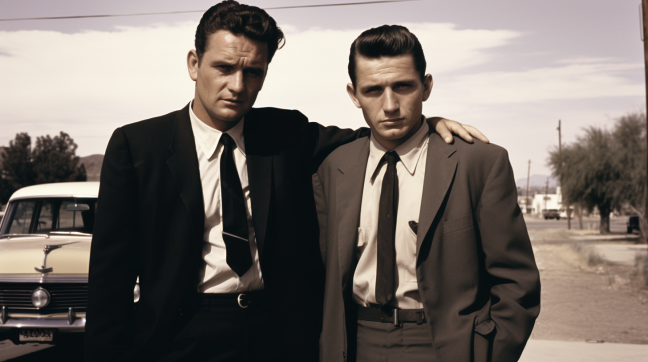The Killers and Their Motive
Perry Smith and Richard Hickock, who met in a Kansas prison, meticulously planned a heist targeting the Clutter family. They believed the Clutters had amassed significant wealth. Truman Capote once said in an interview with Time Magazine, “It was greed that united them, but it was a misconceived and disastrous alliance.”
Additionally, an excerpt from “In Cold Blood” encapsulates their naive ambitions: “They had no real understanding of the people they chose to rob and murder. They were out of their depth, swimming in a sea of illusion.”
Preparations for the Crime
Despite their planning, Smith and Hickock were poorly prepared for the crime they were about to commit. Crime author Patricia Cornwell commented, “The tragedy lies not only in the murder but also in the killers’ ill-preparedness.” A Kansas City Star article from 1959 also reported, “Two Men Seen Casing Clutter Home,” suggesting suspicions were already aroused before the crime.
The Fateful Night
On November 15, 1959, Smith and Hickock broke into the Clutter family home, expecting to find a safe filled with cash. When the safe proved to be nonexistent, they killed Herbert, Bonnie, Nancy, and Kenyon Clutter. The New York Times headlined, “Family of Four Found Dead in Kansas Home; Each Shot in the Head,” capturing the horror and senselessness of the act.
Capture and Trial
Upon a tip-off, Smith and Hickock were arrested in Las Vegas. During the trial, their lawyers attempted an insanity defense, which failed to gain traction. Legal analyst Jeffrey Toobin noted in a 2003 review of the case, “What was most chilling was how premeditated the whole operation was, making any claim of insanity a difficult sell to the jury.”
Literary Immortalization
Truman Capote’s “In Cold Blood” not only brought the case to the forefront but also revolutionized true-crime literature. The Guardian’s review emphasized, “Capote created a genre. He took facts and wove them into a narrative as compelling as any novel.”
Execution and Legacy
Convicted and sentenced to death, Smith and Hickock were executed by hanging on April 14, 1965. Their deaths weren’t the end, however. An Atlantic feature postulated, “These men died, but they lived on in a discomfiting fame, largely due to Capote’s narrative brilliance.”
Psychological Insights
Many experts have attempted to understand the motivations behind such a heinous crime. Dr. David Wilson, in his academic paper, emphasized, “While greed was a component, what we see in Smith and Hickock are classic signs of sociopathy, coupled with deep-rooted emotional damage.”
By examining the case through the lens of literature, law, and psychology, we gain insight into the tragic events and the individuals involved. The narrative continues to serve as a grim reminder of the complexities of crime and the human psyche.
